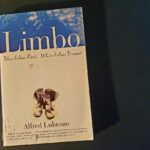Within the perennial crisis that marks the trajectory of the social sciences, discussions about how to ‘do’ and to ‘teach’ theory, variously defined, crop up again and again. One common practice, often discussed and debated, is to consider theory as ‘lens’ through which to view and study the social world (see Murphy, 2013, and also here). This ‘lensification’, aligned, as it is, with the dreaded ‘theoretical framework’, is problematic from a number of perspectives. It suggests a passive appropriation of theories and concepts, leads to the veneration of a number of ‘big and important’ celebrity/aristocratic thinkers (Bourdieu, Foucault etc), and to the hollowing out of social science research. More often than not, some pre-packaged ‘framework’ or ‘lens’ is plucked from the proverbial shelf, half-heartedly de-cobwebbed, hastily assembled, and roughly ‘slotted in’ before the ‘real’ research – data collection/analysis – can occur. For many, theory is considered an inconvenient ‘box’ that requires quick ‘ticking’, and is ritualistically treated like the salt of the sumo wrestler – thrown around the beginning of theses, papers, and books to ward off or confuse the ‘evil spirits’ of supervisor, examiner or peer reviewer. In short, what lensification results in is Ikeafication, the safe and boring assemblage of flat-packed ideas that have been designed by others, which often stand in rickety relation to the ‘research’ they are supposed to frame, account for, and explain.
The fault, I stress, doesn’t necessarily lie with the beleaguered, ‘lone researcher’. The social world of social research is such that the pressure, especially concentrated on PhD, Post-Doc and Early Career researchers – to finish/produce/publish work, to attain funding, to live on low-paid, insecure part-time/temporary/precarious positions, with little or no time for actual thinking – is enormous, and immoral, and counter-productive. Under such conditions theory, dismissed as an indulgent luxury by its critics anyway, becomes as such in fact and practice for time-poor researchers who struggle to read books, still the primary outlet for theoretical labour, or engage in critical and rigorous contemplation, at all. There is also the related status of theory more generally, increasingly deinstitutionalized and devalued within and across the social sciences themselves, here, and elsewhere (see, for example, Lizardo’s thought-provoking talk on the ‘end of theorists’ in US sociology). Finally, and also relatedly, and no less importantly, the fault lies with those of us tasked with the teaching of theory. Theory becomes lensified when it is taught as received wisdom, as static and finished, as the quasi-religious dictats of (mostly) dead (mostly) white (mostly) men, sombrely-intoned by (mostly) junior staff in (mostly) unwieldly survey modules, in a Pyrrhic attempt to stretch from ‘the beginning’ to Butler or Bourdieu or beyond – ‘in the name of the habitus, and of the field, and of the cultural capital, amen’. When (capital T) ‘Theory’ is taught like this what is lost, as Richard Swedberg has recently reminded us, is the creative, embodied process of ‘theorizing’ itself. That it is work, an engaged and lively practice, fundamental to the practice of social science. It is not only something you struggle to read, it should also be something you struggle to do. It is not an outcome, ‘immaculate’ and fully formed, but rather a tentative, halting, messy, and serendipitous process.
Thus, rather than speaking of theory as ‘lens’ I have found it better, especially when teaching postgraduates, to speak of ‘lens-grinding’. This metaphor was inspired by Spinoza (1632 – 1677), the Dutch philosopher, intellectual, and Jewish heretic, who was also a famous grinder of lenses in the 17th century. At the time, lenses were a key technology for the Scientific Revolution. They were central to the developing science of optics, and used in the manufacture of microscopes, telescopes and other scientific instruments. Spinoza’s lenses were highly prised, and used by figures such as Christiaan Huygens, and discussed in his correspondence with Oldenburg (of the Royal Society) and Leibnitz (see Nadler’s (2001) Spinoza: A Life. There is also a fascinating blog by kvond linking Spinoza’s lens making to his philosophy here).
By extending the metaphor from the static ‘lens’ to the more dynamic and embodied ‘lens-grinding’ theory is returned to the status of craft; brought back down from the high and rarefied hills to the workshop floor. Within this construction we may retain the benefits of the lens metaphor – a cluster of concepts arranged in a specific relational order through which we view aspects of the social world pluralistically – but remind ourselves that such instruments must be constructed, not appropriated. Here, lenses become an assembled matrix of concepts, each of which must be worked on – by grinding and polishing – so that an appropriate apparatus can be coherently (from Latin cohaerentem, present participle of cohaerere ‘cohere’, from com- ‘together’ + haerere ‘to stick’) configured and constructed. This grinding of individual concepts aims to clarify (Latin: clarificare), to make them clear, focused and suited to the particular use they will be put. They must also be ground to ‘fit in’ with the rest of the conceptual apparatus that comprises the lens as a whole. That is, each component of the lens must be made commensurable with the others in the configuration. Grinding itself might take many forms, but is ultimately a process of critical revision, refinement and restatement. It is embodied intellectual labour, requiring a keen and critical eye for the ‘chinks’ and ‘blemishes’ in existing conceptualizations, that requires time, and patience, and the right combination of humility, courage, and foolishness. It is a process that encourages, and rewards, bricolage and scholarship. Indeed, much of the work goes on behind our own backs, as it were, tacitly, as well as through writing and in dialogue. Such work should not be seen as separate from or in opposition to the practice of social science: it is integral to it, and to keeping it vibrant and moving forward.
We have had enough epigonism and (half-occluded) cultism, especially in sociology and social theory, and lensification has contributed to both. What we need are new, and different, voices, and ways of speaking. To speak of, and teach, theory in terms of lens-grinding suggests a mode of engagement with theorists and concepts that is active, critical, and above all creative. It is to advocate the ‘way of the bee’, as Francis Bacon (1620) suggested in his Novum Organum (and as Swedberg, 2014, p.80 reminds us): ‘Those who have treated of the sciences have been either empiricists or dogmatists. Empiricists, like ants, simply accumulate and use; Rationalists, like spiders, spin webs from themselves. The way of the bee is in between: it takes material from the flowers of the garden and the field; but it has the ability to convert and digest them’. But it is also to advocate and instil the sociological imagination as Mills understood it when he admonished us to be ‘good craftsman’ (sic):
avoid any rigid set of procedures. Above all, seek to use the sociological imagination. Avoid the fetishism of method and technique. Urge the rehabilitation of the unpretentious intellectual craftsman, and try to become such a craftsman yourself. Let every man be his own methodologist; let every man be his own theorist; let theory and method again become part of the practice of a craft. Stand for the primacy of the individual scholar; stand opposed to the ascendancy of research teams of technicians. Be one mind that is on its own confronting the problems of man and society (C.W. Mills, 1959, p.224).
This is precisely (mutatis mutandis) what a shift from theory as lens to theory as lens-grinding is intended to foster. So, go work your ‘stubborn crystal’, and try to kill your heroes.











Why and how would this lens-grinding be different form iteratively refining a sensetizing concept in a grounded theory approach?